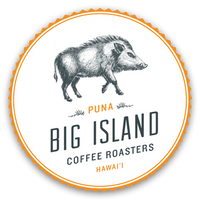Each cup of coffee carries a story. It carries the story of the people who roasted it. It carries the story of the people who transported it. It carries the story of the people who produced it. It carries the story of the land that bore it. Maui Mokka is one of the famed varieties of Hawaiian coffee, but its history goes far back in the past to the other side of the globe.
Mokka, Mocha, and Mokha: What’s the Difference?
Mokka coffee variety is distinguished by its petite, round berries and chocolatey flavors. Yes, “mokka” and “mocha” are related, but the reason they are related goes back to the Middle East, specifically to the Yemeni port of Mokha. Mokha was the center of the coffee trade from the 15th century to the early 18th century. When the Ottoman Turks occupied Yemen, coffee soon spread throughout the empire and eventually reached Europe. Europeans started to associate coffee from Mokha with chocolate in the mid to late 1600s, and the term “mocha,” as we understand it today, was born.
Source: http://lalearan.com/turkish-coffee-from-ethiopia-to-bosphorus/
The origin of Yemeni mokka coffee, however, dates back further than the Ottoman Empire. The mokka coffee plant was likely brought from nearby Ethiopia, but Yemen was the first to cultivate Coffea arabica(“Arabian coffee”). Historical documents show that Yemeni Sufi monks cultivated, drank, and produced coffee for trade as early as the 1400s. 90% of the world’s coffee can be genetically traced back to Yemen. Source: https://www.almokha.com/pages/learn
Source: https://www.almokha.com/pages/learn
Where Did Maui Mokka Come From?
In 1986, six hundred years later, the University of Hawaii field-tested 23 varieties of Coffea arabica across the state. One of those varieties was "tall Mokka," a hybrid between Yemeni mokka and Typica imported from Brazil in the 1960s. One of those participating test sites was Pioneer Mill Company’s Pu‘ukoli‘i sugar plantation located in the West Maui Mountains.
Mokka On Maui
At the time, Pioneer Mill Company had 6,000 acres in sugar cane production. They then converted 500 acres to coffee for the University of Hawaii field test. The field trials from this area, now known as the Ka‘anapali Estate, produced four viable coffee varieties: Maui Mokka, Red Catuai, Yellow Caturra, and Typica. “Pioneer Mill Company’s transplanting machine carefully plants each coffee tree in 1988. Coffee is planted in a hedgerow configuration.”Source: MauiGrown Coffee
“Pioneer Mill Company’s transplanting machine carefully plants each coffee tree in 1988. Coffee is planted in a hedgerow configuration.”Source: MauiGrown Coffee
In 1996, Pioneer Mill harvested their first season of Maui Mokka. Unfortunately, the company ceased operations in 2001. James “Kimo” Falconer, Pioneer Mill’s director of agriculture, refused to give up on the coffee operation, and in 2003, he formed MauiGrown Coffee to revive production at Ka‘anapali Estate.
Today, MauiGrown Coffee is the only producer of Maui Mokka coffee on a commercial scale. The small beans can be challenging to harvest, but they are making strong impressions on the coffee world. Maui Mokka placed first in Hawaii Coffee Association’s Cupping Competition.
This month’s release of Maui Mokka will be extra special. Maui Mokka beans are already small compared to other coffee varieties, but this month our Wild Hawaiian Coffee Club members are receiving super tiny Maui Mokka, two to three screen sizes smaller than usual!So when you brew your coffee this month, look at these mini beans. Think about their history and all the stories they’ve carried in their small bodies to ensure you have an incredible cup. Recommended Brewing: French press, espresso, cold brew
Recommended Brewing: French press, espresso, cold brew
WATCH THE BREW GUIDE: Maui Mokka X French press





